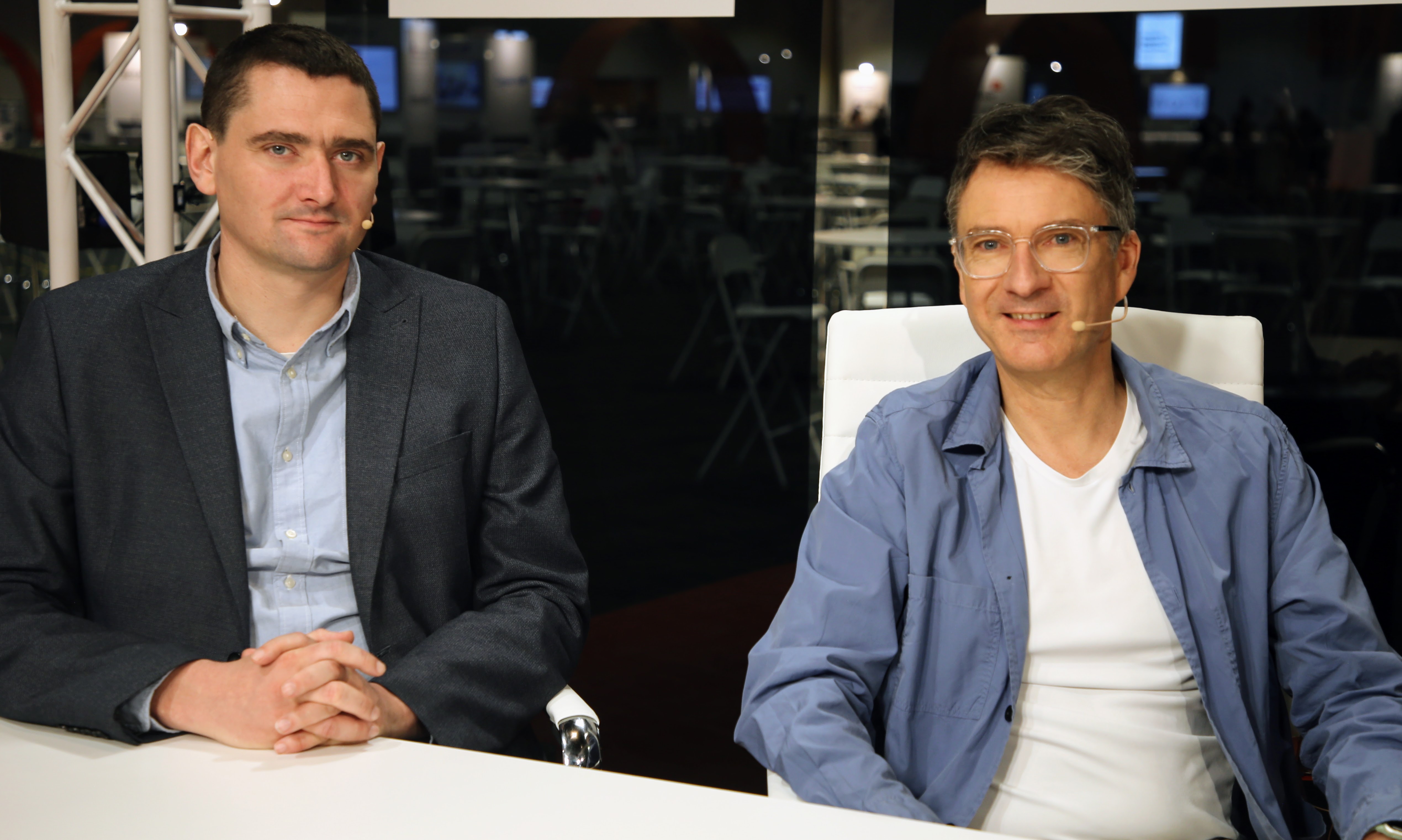 AI
AI
 AI
AI
 AI
AI
The transformation of artificial intelligence from theory to technology makes it an inspiring time to be involved in the field.
Even with recent advancements in generative AI, the biggest obstacles to gaining trust in AI revolve around embedding it in processes and automations to ensure it does exactly what is needed and is a net positive, according to Ed Challis (pictured, left) head of AI strategy at UiPath Inc.
“It is a very challenging problem — like the hallucination thing, it’s a really difficult fundamental research problem that I don’t think is really fully being solved by anybody yet. It’s not just UiPath who’s got this challenge,” said David Barber (right) director of the UCL Centre for AI at University College London. “It’s a universal issue. And that stems from the fundamental way these machines are working. They’re built like human brains work. In some ways that’s a good thing, but it’s a challenge because humans are also kind of fallible in a similar way.”
Challis and Barber spoke with theCUBE industry analysts Rebecca Knight and Lisa Martin at the UiPath FORWARD event, during an exclusive broadcast on theCUBE, SiliconANGLE Media’s livestreaming studio. They discussed accessibility of AI and tackling trust, security, and verification challenges . (* Disclosure below.)
Marriage between human cognition and machine capabilities is being pursued to create a powerful system, according to Barber. With companies seeking help in building AI strategies to maximize data value and address concerns of information security and trust.
There is also the need to dispel the misconception that AI technology is limited to chat applications and highlighting its potential for automation and data manipulation with tools such as human-in-the-loop verification providing governance and control.
“In any kind of really sensitive process, like when a bank makes a big payment, one person types it in, and another person checks it. It’s a really foolproof way of getting that stuff to be safe,” Challis said. “We can use those same methodologies with this technology, get more governance, more control, but also improve the experience and efficiency of these processes.”
Here’s the complete video interview, part of SiliconANGLE’s and theCUBE’s coverage of the UiPath FORWARD event:
(* Disclosure: UiPath Inc. sponsored this segment of theCUBE. Neither UiPath nor other sponsors have editorial control over content on theCUBE or SiliconANGLE.)
THANK YOU